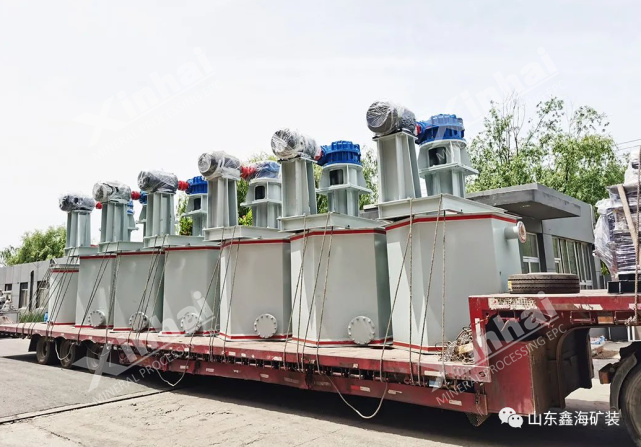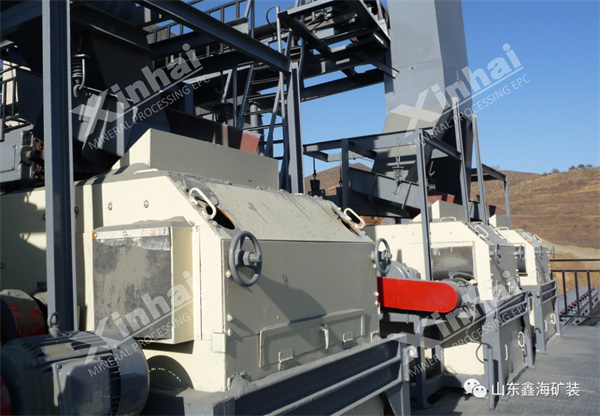Iron is one of the main impurities in quartz sand. If you want to improve the purity, removing iron from quartz sand is a very important step. In addition to being used in traditional industries such as glass manufacturing and building materials, quartz sand has also been widely used in high-tech industries in recent years, which puts forward higher requirements for the SiO2 content of quartz sand. So how to remove iron from quartz sand? The commonly used methods for removing iron include mechanical scrubbing, gravity separation, magnetic separation, flotation, acid leaching, ultrasonic scrubbing, and so on. This article mainly introduces these quartz sand iron removal processes and equipment.

The surface of quartz sand may adhere to a thin film of iron or some iron-containing substances. This surface adhesive material can be removed by mechanical external forces, as well as by collision and friction between minerals. Some iron oxide films adhere firmly and require the addition of chemical reagents. Common methods include mechanical scrubbing and rod scrubbing.
Advantages of mechanical scrubbing method: simple operation, low cost, and large output, suitable for some small enterprises to remove thin film iron from the surface of quartz sand. The final product meets the quality requirements of float glass for high-quality silica sand.
Equipment used for mechanical scrubbing:
(1) Stirring scrubbing machine
It is suitable for natural or artificial sand with a mineral particle size of 0-6mm, various loose mud plasmids to form ore or materials, and for particle scrubbing purification, dispersion, dissociation, and separation of muddy materials. It can effectively remove solvents and soil adhering to the surface of minerals or materials.
(2) Rod mill
The rod mill scrubbing method requires the use of highly efficient and powerful scrubbing with chemicals, coupled with reasonable processes and equipment, with good results. The agent can increase the electric repulsion force between the impurity ore and the surface of quartz, thereby strengthening the separation between the two.
The difficulty in purification of quartz sand is mainly due to the presence of some impurity minerals, some of which contain iron, such as goethite, hematite, limonite, ilmenite, pyrrhotite, tourmaline, amphibole, biotite, etc. These impurities greatly reduce the use value of quartz sand, so it is very important to remove iron from quartz sand. Below are seven methods and equipment for removing iron from quartz sand.
The gravity iron removal method is applicable when iron in quartz sand exists as a heavy mineral (relative density>2.9), and gravity separation should be given priority. However, for flaky particles, light mineral particles, and medium density minerals, it is not suitable for gravity separation.
Gravity separation standard: E=(heavy mineral density medium density)/(light mineral density medium density). When E>2.5, the gravity iron removal method has a better effect; When the E value decreases, gravity can be used to remove iron, but the efficiency decreases. When E<1.25, gravity beneficiation will not be suitable.
Common equipment for gravity iron removal method: gravity concentrator, spiral chute, and vibration table.
When spiral chutes are used for mineral processing, quartz mortar can be divided into three parts: granular heavy mineral area, granular quartz sand area, flake and light quartz sand area. In this way, the spiral chute can not only remove heavy minerals from quartz sand, but also partially remove mica minerals.
Magnetic separation is a commonly used method for removing iron from quartz sand. The process principle of magnetic separation method is to remove iron from quartz sand by utilizing the diamagnetism of quartz and the magnetic difference of iron. Advantages of magnetic separation and iron removal process:
(1) Removing weakly magnetic minerals such as hematite, limonite, and biotite (including conjoined particles) to a greater extent;
(2) After multiple magnetic separations, the particles of quartz sand become finer and finer, and the effect of magnetic separation on iron removal is better;
(3) The concentrate grade is higher.
Equipment used in magnetic separation and iron removal process:
Wet magnetic separation method: The equipment used includes high gradient magnetic separators, but wet high intensity magnetic separators have high power consumption, easy wear, high cost, and large water consumption in the production process.
Dry magnetic separation method: Dry strong magnetic separators are mostly used for impurity removal, with convenient process operation and lower operation and maintenance costs than wet magnetic separators.

The flotation process for removing iron from quartz sand is carried out using hydrofluoric acid as an activator and amine cationic collectors under strong acidic conditions (pH 2-3). When flotation iron, NaOH can be used to inhibit quartz activated by metal ions. Methods can be divided into fluorinated acid method, fluorine-free acid method, and fluorine-free acid method.
Advantages of flotation iron removal process: The iron removal effect is obvious, which can not only remove iron minerals, but also remove particles with iron film and clay minerals.
Flotation iron removal equipment: flotation machine, stirring tank.
The acid leaching method for removing iron utilizes the characteristic that quartz sand is insoluble in acids (except hydrogen fluoride), while iron impurities can be counted as soluble. Acid leaching method can not only effectively remove iron impurities, but also remove non-metallic impurities in use. The common acids used in acid leaching include sulfuric acid, hydrochloric acid, nitric acid, and hydrofluoric acid.
Advantages of acid leaching process for iron removal: The harmful components present in quartz sand are in the form of mineral aggregates, and single acid leaching is not effective. Mixed acid leaching is often used.
Acid leaching iron removal equipment: leaching stirring tank, quartz sand pickling tank (cone bottom, flat bottom).
Ultrasonic iron removal is mainly used to remove the secondary iron film on the surface of particles. After 10 minutes of treatment with ultrasonic technology, the iron removal rate can generally reach 46% to 70%. To improve the cleaning effect, an appropriate amount of sodium carbonate reagent, sodium carbonate, and surfactant can be added. Currently, the cost of ultrasonic iron removal for quartz sand beneficiation is relatively high, and its application in large beneficiation plants is relatively difficult. However, for those with high purity requirements, low production is possible.
Microbial leaching of thin film iron or iron from the surface of quartz sand particles is a new technology for iron removal, which is currently at the stage of laboratory and small-scale experimental research.
Microbial Aspergillus niger leaching has a good effect on iron removal. The iron oxide removal rate is as high as 88.8%, and the iron oxide grade in quartz sand is as low as 0.008%.
The purity of quartz sand determines its value. It is necessary to control the iron content in quartz sand within a certain range in order to meet the quality requirements and apply it to various industrial fields. For example, high purity quartz sand for photovoltaic applications requires a SiO2 content of>99.99% and an iron content of<0.5. Through the above 7 process methods, iron removal from quartz sand can be completed, reaching industrial standards.